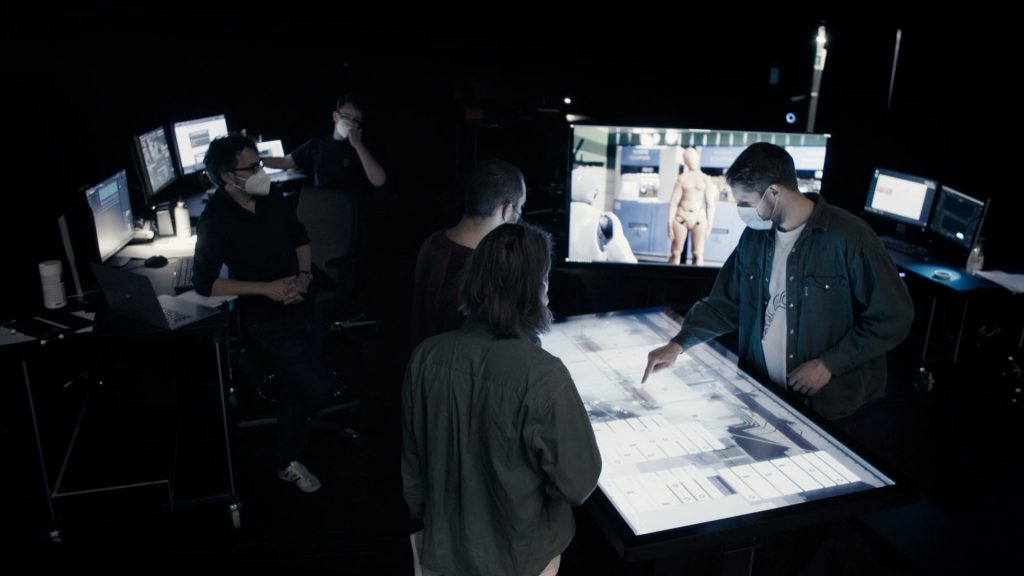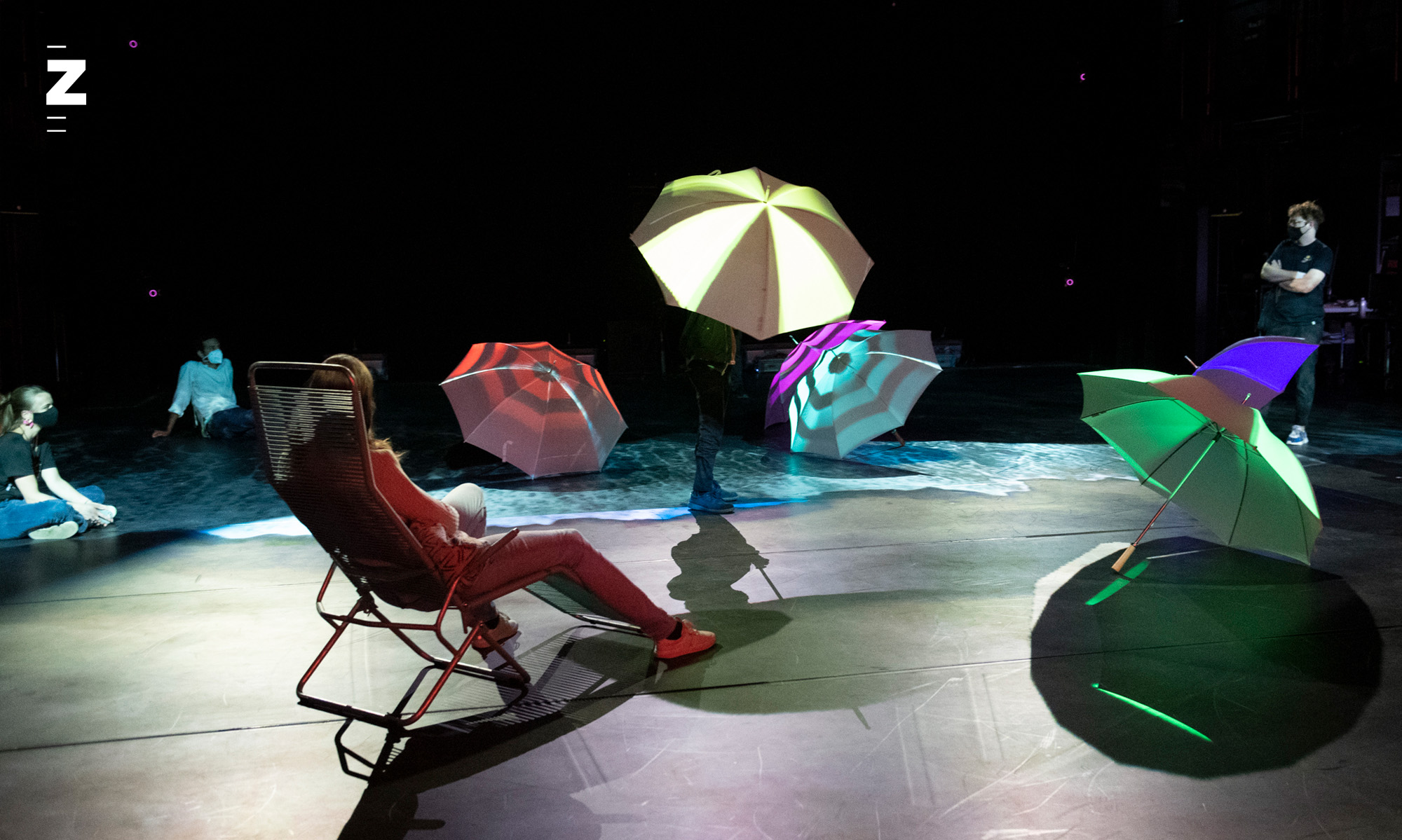
cineDesk is a versatile previsualization tool that provides real-time simulations for the development of film scenes, VR experiences and games in 3D spaces. In the preproduction process of films, cineDesk primarily supports scene blocking and lighting previsualization. Directors, cinematographers and production designers can collaboratively explore how space, props and acting, are translated into cinematic sequences. The positions and movements of the virtual actors and the virtual camera in the 3D space are rendered in real time into 2D videos with the help of the Unreal game engine. This allows staging and visualization ideas to be explored interactively as a team. And, by means of virtual reality goggles, the virtual 3D space can be entered and experienced directly.
cineDesk, is a further development of the Previs Table, which goes back to cooperation with Stockholm University of the Arts. The actual research focuses on advanced features and multiple applications (e.g. for gaming, stage design, architecture etc.)
Developers: Norbert Kottman, Valentin Huber, videos: cineDesk, Scene-Blocking, research field : Virtual Production
> cineDesk has its own website. Please visit www.cinedesk.ch

